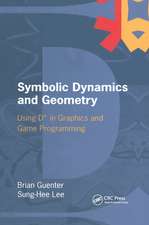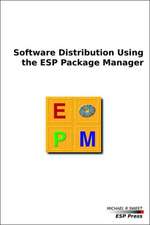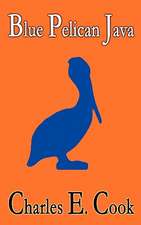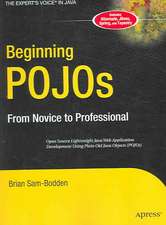Interpreting LISP: Programming and Data Structures
Autor Gary D. Knotten Limba Engleză Paperback – 24 iun 2017
Learn Lisp programming in a data structures context, including tables, functions, forms, expressions, typed-pointers, I/O, garbage collection and some applications. This short primer contains a careful description of the data structures manipulated by Lisp functions. These data structures and others, notably hash tables, are also used in constructing a Lisp interpreter.
Interpreting Lisp will be of special interest to those learning and using programming languages and computer architecture as well as data structures. This book will be useful to autodidacts, professional programmers, and computer enthusiasts in a wide variety of fields.
What You'll Learn
- Use the atom table and the number table in Lisp
- Master expressions, typed pointers, arguments and results in typed pointers, and more
- Write lambda expressions in Lisp
- Bind actual values to formal arguments
- Develop games in Lisp
Who This Book Is For
Experienced programmers new to Lisp.
Preț: 312.33 lei
Preț vechi: 390.41 lei
-20% Nou
Puncte Express: 468
Preț estimativ în valută:
59.77€ • 62.32$ • 49.68£
59.77€ • 62.32$ • 49.68£
Carte tipărită la comandă
Livrare economică 21 martie-04 aprilie
Preluare comenzi: 021 569.72.76
Specificații
ISBN-13: 9781484227060
ISBN-10: 1484227069
Pagini: 100
Ilustrații: XIII, 150 p. 15 illus.
Dimensiuni: 155 x 235 mm
Greutate: 2.64 kg
Ediția:2nd ed.
Editura: Apress
Colecția Apress
Locul publicării:Berkeley, CA, United States
ISBN-10: 1484227069
Pagini: 100
Ilustrații: XIII, 150 p. 15 illus.
Dimensiuni: 155 x 235 mm
Greutate: 2.64 kg
Ediția:2nd ed.
Editura: Apress
Colecția Apress
Locul publicării:Berkeley, CA, United States
Cuprins
1. LISP.- 2. The Atom Table and the Number Table.- 3. Evaluation.- 4 Some Functions and Special Forms.- 5. S-Expressions.- 6. Typed-Pointers.- 7. Pictorial Notation.- 8. More Functions.- 9. Arguments and Results are Typed-Pointers.- 10. List Notation.- 11. More Special Forms.- 12. Defining Functions: λ-Expressions.- 13. More Functions.- 14. Defining Special Forms.- 15. The Label Special Form.- 16. The Quote Macro.- 17. More Functions.- 18. More About Typed-Pointers.- 19. Binding Actual Values to Formal Arguments.- 20. Minimal LISP.- 21. More Functions.- 22. Input and Output.- 23. Property Lists.- 24. What is LISP Good For?.- 25. Symbolic Differentiation.- 26. Game-Playing.- 27. The LISP Interpreter Program.- 28. Garbage Collection.- 29. LISP in C.
Notă biografică
Gary Knott, PhD is founder/CEO of Civlized Inc., the makers of MLAB. He is also a professor, expert consultant in mathematical models with emphasis on applications of interest to the National Institute of Health (NIH). He was a computer scientist and programmer for the NIH as well.
Textul de pe ultima copertă
Learn Lisp programming in a data structures context, including tables, functions, forms, expressions, typed-pointers, I/O, garbage collection and some applications. This short primer contains a careful description of the data structures manipulated by Lisp functions. These data structures and others, notably hash tables, are also used in constructing a Lisp interpreter.
Interpreting Lisp will be of special interest to those learning and using programming languages and computer architecture as well as data structures. This book will be useful to autodidacts, professional programmers, and computer enthusiasts in a wide variety of fields.
- Use the atom table and the number table in Lisp
- Master expressions, typed pointers, arguments and results in typed pointers, and more
- Write lambda expressions in Lisp
- Bind actual values to formal arguments
- Develop games in Lisp
Caracteristici
A one-of-a-kind short book on learning and using Lisp Takes a uniquely structural view on Lisp An original functional programming language with many applications including data structures and even game development























